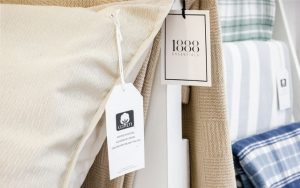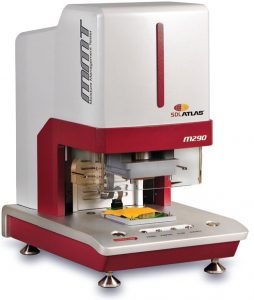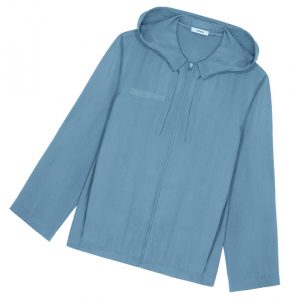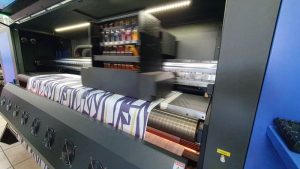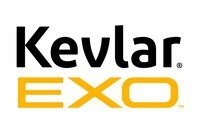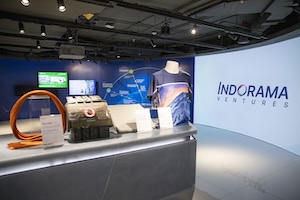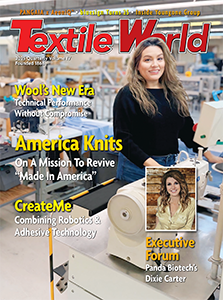 TEMPE, Ariz. — December 1, 2025 — Economic activity in the manufacturing sector contracted in November for the ninth consecutive month, following a two-month expansion preceded by 26 straight months of contraction, say the nation’s supply executives in the latest ISM® Manufacturing PMI® Report.
TEMPE, Ariz. — December 1, 2025 — Economic activity in the manufacturing sector contracted in November for the ninth consecutive month, following a two-month expansion preceded by 26 straight months of contraction, say the nation’s supply executives in the latest ISM® Manufacturing PMI® Report.
The report was issued today by Susan Spence, MBA, Chair of the Institute for Supply Management® (ISM) Manufacturing Business Survey Committee.
“The Manufacturing PMI registered 48.2 percent in November, a 0.5-percentage point decrease compared to the reading of 48.7 percent in October. The overall economy continued in expansion for the 67th month after one month of contraction in April 2020. (A Manufacturing PMI above 42.3 percent, over a period of time, generally indicates an expansion of the overall economy.) The New Orders Index contracted for a third straight month in November following one month of growth; the figure of 47.4 percent is 2 percentage points lower than the 49.4 percent recorded in October. The November reading of the Production Index (51.4 percent) is 3.2 percentage points higher than October’s figure of 48.2 percent. The Prices Index remained in expansion (or ‘increasing’ territory), registering 58.5 percent, up 0.5 percentage point compared to the reading of 58 percent reported in October. The Backlog of Orders Index registered 44 percent, down 3.9 percentage points compared to the 47.9 percent recorded in October. The Employment Index registered 44 percent, down 2 percentage points from October’s figure of 46 percent.
“The Supplier Deliveries Index indicated faster delivery performance after three consecutive (and 14 of the previous 16) months in ‘slower’ territory. The reading of 49.3 percent is down 4.9 percentage points from the 54.2 percent recorded in October. (Supplier Deliveries is the only ISM PMI Reports index that is inversed; a reading of above 50 percent indicates slower deliveries, which is typical as the economy improves and customer demand increases.) The Inventories Index registered 48.9 percent, up 3.1 percentage points compared to October’s reading of 45.8 percent.
“The New Export Orders Index reading of 46.2 percent is 1.7 percentage points higher than the reading of 44.5 percent registered in October. The Imports Index registered 48.9 percent, 3.5 percentage points higher than October’s reading of 45.4 percent.”
Spence continues, “In November, U.S. manufacturing activity contracted at a faster rate, with pullbacks in supplier deliveries, new orders and employment leading to the 0.5-percentage point decrease of the Manufacturing PMI. Continuing a recent trend, a previous month’s improvement in one index was evident in another gauge. After new orders strengthened in August, production improved in September. An improvement in the Backlog of Orders Index in October transferred to the Production Index, which expanded in November (as backlogs pulled back). However, the New Orders and Employment indexes both dipped 2 percentage points, underscoring the ongoing economic uncertainty.
“Decreases in two of the four demand indicators (Backlog of Orders and New Orders) overwhelmed the gains posted by the New Export Orders and Customers’ Inventories indexes. The Customers’ Inventories Index contracted at a slower rate. A ‘too low’ status for the Customers’ Inventories Index is usually considered positive for future production.
“Regarding output, production jumped into expansion, but employment contracted at a faster pace, as 67 percent of panelists (the same as October) indicated that managing head counts is still the norm at their companies, as opposed to hiring.
“Finally, inputs (defined as supplier deliveries, inventories, prices and imports), were mixed, with the Supplier Deliveries Index indicating faster deliveries, the Inventories Index contracting at a slower rate, and the Prices Index continuing to reflect increases. The Imports Index contracted at a slower rate.
“Looking at the manufacturing economy, 58 percent of the sector’s gross domestic product (GDP) contracted in November, matching the previous month’s figure, and the percentage of GDP in strong contraction (registering a composite PMI of 45 percent or lower) decreased slightly, at 39 percent compared to 41 percent in October. The share of sector GDP with a PMI at or below 45 percent is a good metric to gauge overall manufacturing weakness. Of the six largest manufacturing industries, three (Computer & Electronic Products; Food, Beverage & Tobacco Products; and Machinery) expanded in November,” says Spence.
The four manufacturing industries reporting growth in November are: Computer & Electronic Products; Food, Beverage & Tobacco Products; Miscellaneous Manufacturing; and Machinery. The 11 industries reporting contraction in November — in the following order — are: Apparel, Leather & Allied Products; Wood Products; Paper Products; Textile Mills; Fabricated Metal Products; Petroleum & Coal Products; Chemical Products; Nonmetallic Mineral Products; Furniture & Related Products; Transportation Equipment; and Plastics & Rubber Products.
What Respondent Are Saying
- “New order entries are within the forecast. We have increased requests from customers to get their orders sooner. Transit time on imports seems to be longer.” (Machinery)
- “We are starting to institute more permanent changes due to the tariff environment. This includes reduction of staff, new guidance to shareholders, and development of additional offshore manufacturing that would have otherwise been for U.S. export.” (Transportation Equipment)
- “Tariffs and economic uncertainty continue to weigh on demand for adhesives and sealants, which are primarily used in building construction.” (Chemical Products)
- “No major changes at this time, but going into 2026, we expect to see big changes with cash flow and employee head count. The company has sold off a big part of the business that generated free cash while offering voluntary severance packages to anyone.” (Petroleum & Coal Products)
- “Business conditions remain soft as a result of higher costs from tariffs, the government shutdown, and increased global uncertainty.” (Miscellaneous Manufacturing)
- “The unstable market has made pricing fluctuate in a very volatile way; I have had to reduce suppliers for raw materials to maintain a better direct cost structure. Reducing my suppliers has reduced the availability of some items and created longer lead times.” (Fabricated Metal Products)
- “Business continues to be a struggle regarding long-term sourcing decisions based on tariffs and landing costs. External (or international) sourcing remains the lowest-cost solution compared to U.S. production/manufacturing. The delta is smaller now, reducing margins.” (Computer & Electronic Products)
- “The government shutdown has impacted our access to agricultural data, impacting agricultural markets and, as a result, decisions we make. Optimism for a tariff exemption on palm oil percolated but hasn’t come to fruition at this time.” (Food, Beverage & Tobacco Products)
- “Trade confusion. At any given point, trade with our international partners is clouded and difficult. Suppliers are finding more and more errors when attempting to export to the U.S. — before I even have the opportunity to import. Freight organizations are also having difficulties overseas, contending with changing regulations and uncertainty. Conditions are more trying than during the coronavirus pandemic in terms of supply chain uncertainty.” (Electrical Equipment, Appliances & Components)
- “Domestic and export business have been lackluster. Our customers are taking prompt orders only and still don’t have confidence to build inventory, much less make expansion plans. In fact, most of any kind of ‘planning’ has been undermined by unpredictability due to inconsistent messaging from Washington. Artificial intelligence is in its infancy stages, producing confusing and most often inaccurate information. This also causes apprehensive consumer buying patterns, contributing to the challenge of forecasting demand.” (Wood Products)
| MANUFACTURING AT A GLANCE
November 2025 |
| Index |
Series
IndexNov |
Series
IndexOct |
Percentage
Point
Change |
Direction |
Rate of
Change |
Trend*
(Months) |
| Manufacturing PMI® |
48.2 |
48.7 |
-0.5 |
Contracting |
Faster |
9 |
| New Orders |
47.4 |
49.4 |
-2.0 |
Contracting |
Faster |
3 |
| Production |
51.4 |
48.2 |
+3.2 |
Growing |
From Contracting |
1 |
| Employment |
44.0 |
46.0 |
-2.0 |
Contracting |
Faster |
10 |
| Supplier Deliveries |
49.3 |
54.2 |
-4.9 |
Faster |
From Slower |
1 |
| Inventories |
48.9 |
45.8 |
+3.1 |
Contracting |
Slower |
7 |
| Customers’ Inventories |
44.7 |
43.9 |
+0.8 |
Too Low |
Slower |
14 |
| Prices |
58.5 |
58.0 |
+0.5 |
Increasing |
Faster |
14 |
| Backlog of Orders |
44.0 |
47.9 |
-3.9 |
Contracting |
Faster |
38 |
| New Export Orders |
46.2 |
44.5 |
+1.7 |
Contracting |
Slower |
9 |
| Imports |
48.9 |
45.4 |
+3.5 |
Contracting |
Slower |
8 |
| OVERALL ECONOMY |
Growing |
Slower |
67 |
| Manufacturing Sector |
Contracting |
Faster |
9 |
ISM® Manufacturing PMI® Report data is seasonally adjusted for the New Orders, Production, Employment and Inventories indexes.
*Number of months moving in current direction.
Commodities Reported Up/Down In Price And In Short Supply
Commodities Up in Price
Aluminum (24); Copper (5); Critical Minerals; Electrical Components; Electronic Components (3); Natural Gas; Steel*; and Steel — Hot Rolled.
Commodities Down in Price
Freight Packing Materials; Gasoline; Polypropylene Resin (3); and Steel* (4).
Commodities in Short Supply
Electrical Components (5); Electronic Components (9); Labor (3); Rare Earth Components; and Rare Earth Magnets (3).
Note: The number of consecutive months the commodity is listed is indicated after each item.
*Indicates both up and down in price.
November 2025 Manufacturing Index Summaries
Manufacturing PMI®
The U.S. manufacturing sector contracted in November for the ninth consecutive month after two months of expansion preceded by 26 months of contraction. “The Manufacturing PMI registered 48.2 percent in November, a 0.5-percentage point decrease compared to the 48.7 percent recorded in October. Of the five subindexes that directly factor into the Manufacturing PMI, one is in expansion territory, the same number as in October. The Production Index returned to expansion, gaining 3.2 percentage points. The New Orders and Employment index contracted at faster rates, and the Inventories Index increased but remained in contraction. Of the six biggest manufacturing industries, three (Computer & Electronic Products; Food, Beverage & Tobacco Products; and Machinery) registered growth in November,” says Spence. A reading above 50 percent indicates that the manufacturing sector is generally expanding; below 50 percent indicates that it is generally contracting.
A Manufacturing PMI above 42.3 percent, over a period of time, generally indicates an expansion of the overall economy. Therefore, the November Manufacturing PMI indicates the overall economy grew for the 67th straight month after contracting in April 2020. “The past relationship between the Manufacturing PMI and the overall economy indicates that the November reading (48.2 percent) corresponds to a 1.7-percent increase in real gross domestic product (GDP) on an annualized basis,” says Spence.
The Last 12 Months
| Month |
Manufacturing
PMI® |
Month |
Manufacturing
PMI® |
| Nov 2025 |
48.2 |
May 2025 |
48.5 |
| Oct 2025 |
48.7 |
Apr 2025 |
48.7 |
| Sep 2025 |
49.1 |
Mar 2025 |
49.0 |
| Aug 2025 |
48.7 |
Feb 2025 |
50.3 |
| Jul 2025 |
48.0 |
Jan 2025 |
50.9 |
| Jun 2025 |
49.0 |
Dec 2024 |
49.2 |
| Average for 12 months – 49.0
High – 50.9
Low – 48.0 |
New Orders
ISM’s New Orders Index contracted for the third consecutive month in November after one month in expansion, registering 47.4 percent, a decrease of 2 percentage points compared to October’s figure of 49.4 percent. This reading is below the 12-month average (48.9 percent) for the New Orders Index, which hasn’t indicated consistent growth since a 24-month streak of expansion ended in May 2022. “Of the six largest manufacturing industries, three (Computer & Electronic Products; Machinery; and Food, Beverage & Tobacco Products) reported increased new orders. For every positive comment about new orders, there were 1.2 comments expressing concern about near-term demand, driven primarily by tariff costs and uncertainty,” says Spence. A New Orders Index above 52.1 percent, over time, is generally consistent with an increase in the Census Bureau’s series on manufacturing orders (in constant 2000 dollars).
The six manufacturing industries that reported growth in new orders in November — in the following order — are: Electrical Equipment, Appliances & Components; Computer & Electronic Products; Machinery; Miscellaneous Manufacturing; Food, Beverage & Tobacco Products; and Primary Metals. The nine industries reporting a decline in new orders in November, in order, are: Wood Products; Textile Mills; Apparel, Leather & Allied Products; Paper Products; Fabricated Metal Products; Petroleum & Coal Products; Nonmetallic Mineral Products; Transportation Equipment; and Chemical Products.
| New Orders |
%Higher |
%Same |
%Lower |
Net |
Index |
| Nov 2025 |
20.7 |
50.9 |
28.4 |
-7.7 |
47.4 |
| Oct 2025 |
20.4 |
53.6 |
26.0 |
-5.6 |
49.4 |
| Sep 2025 |
18.6 |
56.5 |
24.9 |
-6.3 |
48.9 |
| Aug 2025 |
24.7 |
52.6 |
22.7 |
+2.0 |
51.4 |
Production
The Production Index expanded in November, registering 51.4 percent, 3.2 percentage points higher than the October reading of 48.2 percent. “Of the six largest manufacturing industries, three (Food, Beverage & Tobacco Products; Computer & Electronic Products; and Machinery) reported increased production. Panelists had a 1-to-1 ratio of positive to negative comments regarding output,” says Spence. An index above 52.1 percent, over time, is generally consistent with an increase in the Federal Reserve Board’s Industrial Production figures.
The seven industries reporting growth in production during the month of November — in the following order — are: Food, Beverage & Tobacco Products; Computer & Electronic Products; Miscellaneous Manufacturing; Machinery; Plastics & Rubber Products; Electrical Equipment, Appliances & Components; and Primary Metals. The five industries reporting a decrease in production in November are: Wood Products; Nonmetallic Mineral Products; Fabricated Metal Products; Paper Products; and Chemical Products. Six industries reported no change in production in November.
| Production |
%Higher |
%Same |
%Lower |
Net |
Index |
| Nov 2025 |
22.8 |
57.4 |
19.8 |
+3.0 |
51.4 |
| Oct 2025 |
17.3 |
60.7 |
22.0 |
-4.7 |
48.2 |
| Sep 2025 |
19.0 |
60.5 |
20.5 |
-1.5 |
51.0 |
| Aug 2025 |
16.6 |
62.3 |
21.1 |
-4.5 |
47.8 |
Employment
ISM’s Employment Index registered 44 percent in November, 2 percentage points lower than October’s reading of 46 percent. “The index posted its 10th consecutive month of contraction after expanding in January, with seven straight months of contraction before that. Since May 2022, the Employment Index has contracted in 36 of 43 months. Of the six big manufacturing industries, two (Computer & Electronic Products; and Machinery) reported higher levels of employment in November. For every comment on hiring, there were 3.4 on reducing head counts, equaling the ratio in October. Companies continued to focus on accelerating staff reductions due to uncertain near- to mid-term demand. The main head-count management strategies remain layoffs and not filling open positions,” says Spence. An Employment Index above 50.3 percent, over time, is generally consistent with an increase in the Bureau of Labor Statistics (BLS) data on manufacturing employment.
Of the 18 manufacturing industries, two reported employment growth in November: Computer & Electronic Products; and Machinery. The 12 industries reporting a decrease in employment in November, in the following order, are: Apparel, Leather & Allied Products; Wood Products; Paper Products; Textile Mills; Petroleum & Coal Products; Furniture & Related Products; Electrical Equipment, Appliances & Components; Chemical Products; Miscellaneous Manufacturing; Transportation Equipment; Food, Beverage & Tobacco Products; and Fabricated Metal Products.
| Employment |
%Higher |
%Same |
%Lower |
Net |
Index |
| Nov 2025 |
10.8 |
64.1 |
25.1 |
-14.3 |
44.0 |
| Oct 2025 |
13.1 |
64.6 |
22.3 |
-9.2 |
46.0 |
| Sep 2025 |
11.1 |
64.5 |
24.4 |
-13.3 |
45.3 |
| Aug 2025 |
9.4 |
68.2 |
22.4 |
-13.0 |
43.8 |
Supplier Deliveries†
Delivery performance of suppliers to manufacturing organizations was faster in November, after three months of slower deliveries. “The Supplier Deliveries Index registered 49.3 percent, a 4.9-percentage point decrease compared to the reading of 54.2 percent reported in October. The index is below 50 percent for just the third time in 17 months,” says Spence. Of the six big industries, two (Computer & Electronic Products; and Food, Beverage & Tobacco Products) reported slower supplier deliveries. A reading below 50 percent indicates faster deliveries, while a reading above 50 percent indicates slower deliveries.
The five manufacturing industries reporting slower supplier deliveries in November are: Furniture & Related Products; Computer & Electronic Products; Primary Metals; Food, Beverage & Tobacco Products; and Fabricated Metal Products. The seven industries reporting faster supplier deliveries in November, in order, are: Paper Products; Plastics & Rubber Products; Miscellaneous Manufacturing; Chemical Products; Electrical Equipment, Appliances & Components; Machinery; and Transportation Equipment. Six industries reported no change in supplier deliveries in November.
| Supplier Deliveries |
%Slower |
%Same |
%Faster |
Net |
Index |
| Nov 2025 |
6.1 |
86.3 |
7.6 |
-1.5 |
49.3 |
| Oct 2025 |
11.6 |
85.2 |
3.2 |
+8.4 |
54.2 |
| Sep 2025 |
11.2 |
82.7 |
6.1 |
+5.1 |
52.6 |
| Aug 2025 |
9.2 |
84.2 |
6.6 |
+2.6 |
51.3 |
Inventories
The Inventories Index registered 48.9 percent in November, up 3.1 percentage points compared to the reading of 45.8 percent in October. “Of the six big industries, two (Food, Beverage & Tobacco Products; and Computer & Electronic Products) expanded in November,” says Spence. An Inventories Index greater than 44.5 percent, over time, is generally consistent with expansion in the Bureau of Economic Analysis (BEA) figures on overall manufacturing inventories (in chained 2000 dollars).
Of 18 manufacturing industries, the five reporting higher inventories in November are: Textile Mills; Nonmetallic Mineral Products; Food, Beverage & Tobacco Products; Miscellaneous Manufacturing; and Computer & Electronic Products. The 10 industries reporting lower inventories in November — listed in order — are: Apparel, Leather & Allied Products; Furniture & Related Products; Wood Products; Paper Products; Primary Metals; Chemical Products; Plastics & Rubber Products; Machinery; Fabricated Metal Products; and Transportation Equipment.
| Inventories |
%Higher |
%Same |
%Lower |
Net |
Index |
| Nov 2025 |
14.4 |
67.9 |
17.7 |
-3.3 |
48.9 |
| Oct 2025 |
13.2 |
65.1 |
21.7 |
-8.5 |
45.8 |
| Sep 2025 |
16.0 |
63.7 |
20.3 |
-4.3 |
47.7 |
| Aug 2025 |
19.5 |
61.9 |
18.6 |
+0.9 |
49.4 |
Customers’ Inventories†
ISM’s Customers’ Inventories Index remained in “too low” territory in November, with a reading of 44.7 percent, an increase of 0.8 percentage point compared to the reading of 43.9 percent in October. “Customers’ inventory levels in November continued to contract but moved slightly toward ‘about right’ territory,” says Spence. (For more information about the Customers’ Inventories Index, see the “Data and Method of Presentation” section below.)
The only industry reporting customers’ inventories as too high in November is Electrical Equipment, Appliances & Components. The 11 industries reporting customers’ inventories as too low in November, in order, are: Primary Metals; Plastics & Rubber Products; Paper Products; Furniture & Related Products; Miscellaneous Manufacturing; Food, Beverage & Tobacco Products; Fabricated Metal Products; Machinery; Transportation Equipment; Chemical Products; and Computer & Electronic Products. Six industries reported no change in customers’ inventories in November.
Customers’
Inventories |
%
Reporting |
%Too
High |
%About
Right |
%Too
Low |
Net |
Index |
| Nov 2025 |
73 |
8.8 |
71.8 |
19.4 |
-10.6 |
44.7 |
| Oct 2025 |
75 |
11.8 |
64.1 |
24.1 |
-12.3 |
43.9 |
| Sep 2025 |
73 |
10.5 |
66.3 |
23.2 |
-12.7 |
43.7 |
| Aug 2025 |
74 |
9.5 |
70.1 |
20.4 |
-10.9 |
44.6 |
Prices†
The ISM Prices Index registered 58.5 percent in November, increasing 0.5 percentage point compared to the previous month’s reading of 58 percent, indicating raw materials prices increased for the 14th straight month (and at a faster rate compared to October). The Prices Index has increased 6 percentage points over the past 12 months. Of the six largest manufacturing industries, five (Machinery; Transportation Equipment; Food, Beverage & Tobacco Products; Computer & Electronic Products; and Chemical Products) reported price increases in November. “The Prices Index reading continues to be driven by increases in steel and aluminum prices that impact the entire value chain, as well as tariffs applied to many imported goods. Higher prices were reported by 27.2 percent of respondents in November, down just 0.1 percentage point from 27.3 percent in October and compared to 49.2 percent in April, which was the highest level since June 2022 (65.2 percent),” says Spence. A Prices Index above 52.8 percent, over time, is generally consistent with an increase in the Bureau of Labor Statistics (BLS) Producer Price Index for Intermediate Materials.
In November, the 12 industries that reported paying increased prices for raw materials, in order, are: Apparel, Leather & Allied Products; Electrical Equipment, Appliances & Components; Primary Metals; Machinery; Wood Products; Transportation Equipment; Food, Beverage & Tobacco Products; Nonmetallic Mineral Products; Fabricated Metal Products; Computer & Electronic Products; Miscellaneous Manufacturing; and Chemical Products. The two industries that reported paying decreased prices for raw materials in November are: Plastics & Rubber Products; and Petroleum & Coal Products.
|
Prices |
%Higher |
%Same |
%Lower |
Net |
Index |
| Nov 2025 |
27.2 |
62.6 |
10.2 |
+17.0 |
58.5 |
| Oct 2025 |
27.3 |
61.4 |
11.3 |
+16.0 |
58.0 |
| Sep 2025 |
32.5 |
58.8 |
8.7 |
+23.8 |
61.9 |
| Aug 2025 |
33.5 |
60.4 |
6.1 |
+27.4 |
63.7 |
Backlog of Orders†
ISM’s Backlog of Orders Index registered 44 percent, a decrease of 3.9 percentage points compared to the October reading of 47.9 percent, indicating order backlogs contracted for the 38th consecutive month after a 27-month period of expansion that ended in September 2022. Of the six largest manufacturing industries, only one (Food, Beverage & Tobacco Products) reported expansion in order backlogs in November. “Another month of contraction in the Backlog of Orders Index suggests that trade-related and geopolitical factors persist. Not much improvement is expected until those influences diminish,” says Spence.
Of the 18 manufacturing industries, the three that reported growth in order backlogs in November are: Electrical Equipment, Appliances & Components; Food, Beverage & Tobacco Products; and Fabricated Metal Products. The 11 industries reporting lower backlogs in November — in the following order — are: Paper Products; Wood Products; Textile Mills; Plastics & Rubber Products; Nonmetallic Mineral Products; Chemical Products; Primary Metals; Computer & Electronic Products; Transportation Equipment; Machinery; and Miscellaneous Manufacturing.
Backlog of
Orders |
%
Reporting |
%Higher |
%Same |
%Lower |
Net |
Index |
| Nov 2025 |
90 |
13.9 |
60.2 |
25.9 |
-12.0 |
44.0 |
| Oct 2025 |
90 |
15.7 |
64.4 |
19.9 |
-4.2 |
47.9 |
| Sep 2025 |
89 |
17.2 |
58.0 |
24.8 |
-7.6 |
46.2 |
| Aug 2025 |
91 |
16.3 |
56.7 |
27.0 |
-10.7 |
44.7 |
New Export Orders†
ISM’s New Export Orders Index contracted in November, registering 46.2 percent, up 1.7 percentage points from October’s reading of 44.5 percent. “Export orders contracted for the ninth consecutive month after growing in January and February. That brief period of expansion followed an ‘unchanged’ status (a reading of 50 percent) in December, preceded by six straight months of contraction. Despite a 1.7-percentage-point improvement in the New Export Orders Index, trade frictions continue to weigh on demand. Many panelists still report softer international orders tied to tariffs and ongoing uncertainty around U.S. economic policy,” says Spence.
Of the 18 manufacturing industries, the two that reported growth in new export orders in November are Primary Metals; and Computer & Electronic Products. The 10 industries that reported a decrease in new export orders in November — in the following order — are: Wood Products; Paper Products; Food, Beverage & Tobacco Products; Electrical Equipment, Appliances & Components; Transportation Equipment; Plastics & Rubber Products; Fabricated Metal Products; Machinery; Miscellaneous Manufacturing; and Chemical Products. Six industries reported no change in new export orders in November.
New Export
Orders |
%
Reporting |
%Higher |
%Same |
%Lower |
Net |
Index |
| Nov 2025 |
74 |
10.3 |
71.8 |
17.9 |
-7.6 |
46.2 |
| Oct 2025 |
72 |
10.5 |
68.0 |
21.5 |
-11.0 |
44.5 |
| Sep 2025 |
71 |
7.2 |
71.5 |
21.3 |
-14.1 |
43.0 |
| Aug 2025 |
71 |
11.3 |
72.6 |
16.1 |
-4.8 |
47.6 |
Imports†
ISM’s Imports Index remained in contraction for the eighth straight month in November after a three-month period of expansion. The November figure of 48.9 percent is an increase of 3.5 percentage points compared to the reading of 45.4 percent reported in October. “Imports remained in contraction, indicating that tariff-related pricing pressures and softer demand are still influencing purchasing behavior,” says Spence.
The five industries reporting higher imports in November are: Primary Metals; Computer & Electronic Products; Food, Beverage & Tobacco Products; Miscellaneous Manufacturing; and Fabricated Metal Products. The eight industries that reported lower volumes of imports in November — in the following order — are: Wood Products; Nonmetallic Mineral Products; Furniture & Related Products; Paper Products; Electrical Equipment, Appliances & Components; Machinery; Transportation Equipment; and Chemical Products.
| Imports |
%
Reporting |
%Higher |
%Same |
%Lower |
Net |
Index |
| Nov 2025 |
84 |
13.4 |
71.0 |
15.6 |
-2.2 |
48.9 |
| Oct 2025 |
84 |
10.4 |
69.9 |
19.7 |
-9.3 |
45.4 |
| Sep 2025 |
84 |
9.9 |
69.6 |
20.5 |
-10.6 |
44.7 |
| Aug 2025 |
84 |
9.8 |
72.4 |
17.8 |
-8.0 |
46.0 |
†The Supplier Deliveries, Customers’ Inventories, Prices, Backlog of Orders, New Export Orders, and Imports indexes do not meet the accepted criteria for seasonal adjustments.
Buying Policy
The average commitment lead time for Capital Expenditures in November was 171 days, an increase of 3 days compared to October. The average lead time in November for Production Materials was 81 days, an increase of one day compared to October. The average lead time for Maintenance, Repair and Operating (MRO) Supplies was 47 days, the same as in October.
| Percent Reporting |
Capital
Expenditures |
Hand-to-
Mouth |
30 Days |
60 Days |
90 Days |
6 Months |
1 Year+ |
Average
Days |
| Nov 2025 |
16 |
5 |
8 |
14 |
30 |
27 |
171 |
| Oct 2025 |
18 |
4 |
7 |
14 |
31 |
26 |
168 |
| Sep 2025 |
16 |
5 |
8 |
15 |
29 |
27 |
170 |
| Aug 2025 |
18 |
3 |
7 |
14 |
30 |
28 |
173 |
|
| Percent Reporting |
Production
Materials |
Hand-to-
Mouth |
30 Days |
60 Days |
90 Days |
6 Months |
1 Year+ |
Average
Days |
| Nov 2025 |
10 |
25 |
25 |
26 |
9 |
5 |
81 |
| Oct 2025 |
10 |
26 |
23 |
28 |
8 |
5 |
80 |
| Sep 2025 |
9 |
25 |
23 |
30 |
8 |
5 |
81 |
| Aug 2025 |
9 |
25 |
26 |
25 |
9 |
6 |
84 |
|
| Percent Reporting |
| MRO Supplies |
Hand-to-
Mouth |
30 Days |
60 Days |
90 Days |
6 Months |
1 Year+ |
Average
Days |
| Nov 2025 |
28 |
36 |
16 |
14 |
5 |
1 |
47 |
| Oct 2025 |
30 |
32 |
18 |
14 |
5 |
1 |
47 |
| Sep 2025 |
28 |
35 |
18 |
11 |
7 |
1 |
49 |
| Aug 2025 |
32 |
31 |
18 |
11 |
7 |
1 |
48 |
Posted: December 1, 2025
Source: Institute for Supply Management






